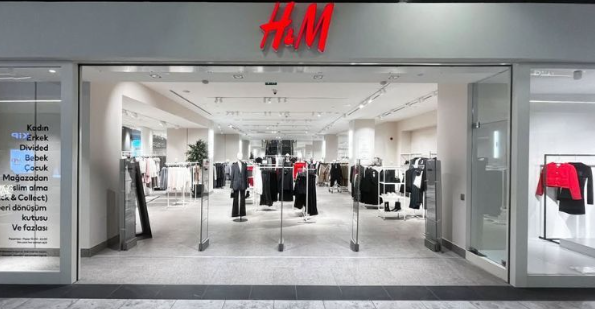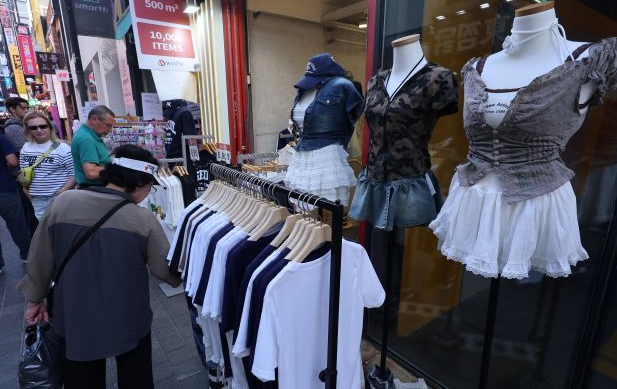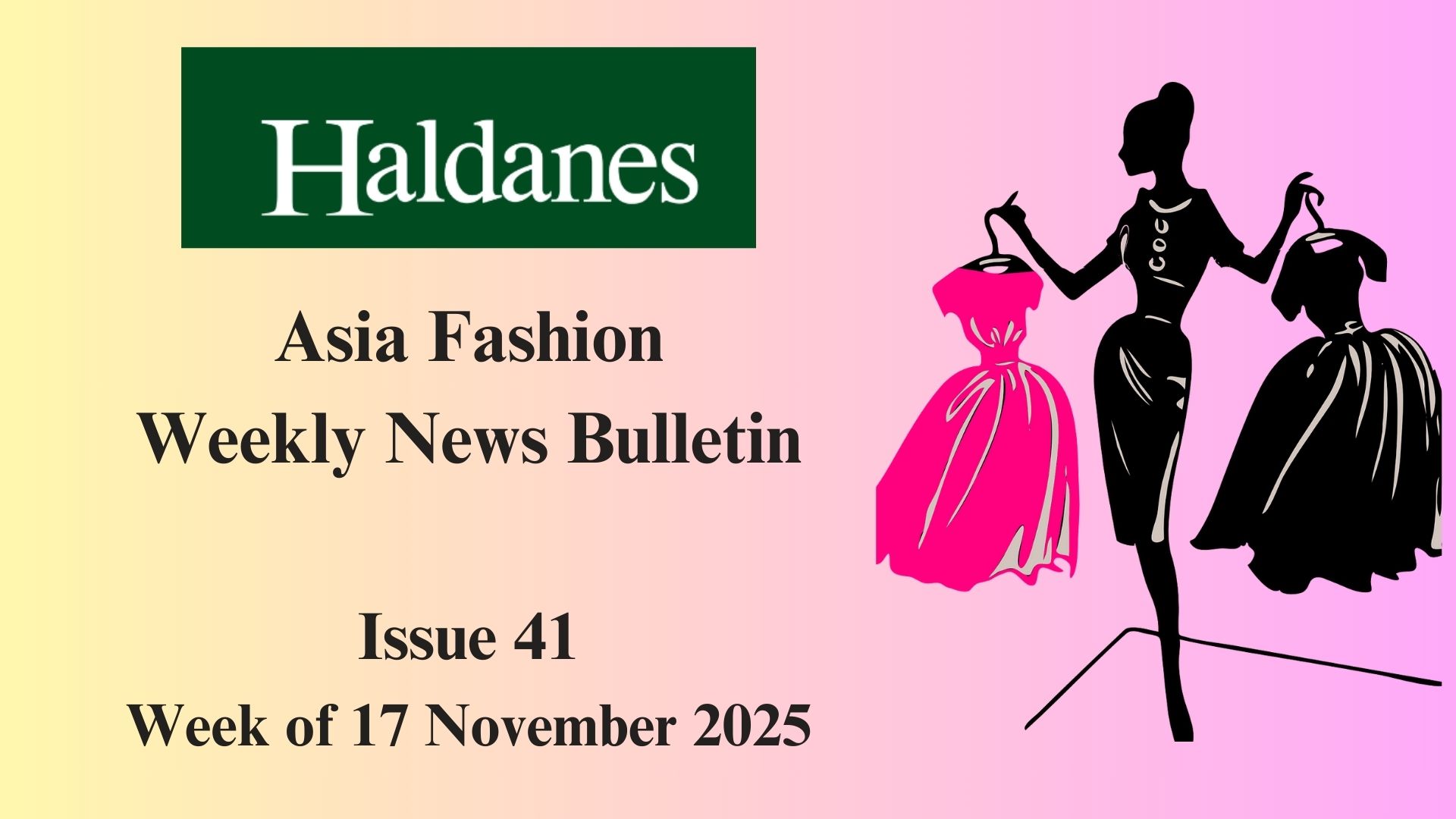Asia Fashion Weekly News Bulletin – ISSUE 17 Week of 2 June 2025
(1) Dior picks Jonathan Anderson as creative director
Irish designer assumes one of most prestigious jobs in fashion.
(2) Shein accused of ‘shaming’ customers into buying more than they can afford
Consumer watchdogs from 21 countries have accused Chinese fast fashion brand Shein of deceptive marketing practices that pressure consumers to overspend.
(3) Stand.earth report: H&M outperforms Zara, SHEIN on climate action
The Stand.earth scorecard reveals a growing divide in the fast fashion industry, with H&M achieving a B+ for its decarbonisation efforts while SHEIN remains at the bottom with an F grade and rising emissions.
(4) South Koreans Spent Nearly ₩83 Trillion on Fashion in One Year, With 50s Leading the Pack
South Koreans spent ₩82.9 trillion (approximately US$61 billion) on fashion last year, with casual wear leading and online shopping surpassing physical stores, particularly among consumers in their 50s.
(1) Dior picks Jonathan Anderson as creative director

(Photo Credit: Financial Times/ Andre Pain/ EPA-EFE)
Jonathan Anderson, a Northern Irish designer, has been appointed as the creative director for women’s, men’s, and haute couture collections at Dior, succeeding Maria Grazia Chiuri, who held the position for nearly a decade. Bernard Arnault, CEO of LVMH, has praised Anderson as one of the greatest creative talents of his generation, emphasising his artistic vision as crucial for Dior’s future.
Anderson began his career in fashion as a window dresser and gained recognition for his debut show in 2008, which featured a gender-fluid menswear collection. Despite initial setbacks, he has since demonstrated a strong commercial instinct and has worked on high-profile projects, including designing Rihanna’s outfit for the Super Bowl. His innovative approach has earned him a reputation as a disrupter in the design world.
His appointment comes amid a broader reshuffle in the luxury fashion sector, as brands seek new creative directions in a challenging market. Anderson’s first collection for Dior is set to be presented in Paris on 27 June 2025, and there is optimism that his modern vision will reinvigorate the brand, inspired by the legacy of Monsieur Dior.
News Source: https://apparelresources.com/business-news/retail/shein-sets-eyes-hong-kong-listing-london-ipo-rejected/
(2) Shein accused of ‘shaming’ customers into buying more than they can afford

(Photo Credit: Reuters)
Consumer watchdogs from 21 countries have lodged a formal complaint against the Chinese fast fashion brand Shein, accusing it of employing deceptive marketing practices that pressure customers into overspending. The European Consumer Organisation (BEUC) detailed various “dark patterns,” including fake countdown timers and tactics that create a fear of missing out, which are designed to manipulate consumer behaviour and encourage excessive purchases.
In response, Shein expressed disappointment over BEUC’s refusal to engage in discussions about these allegations, asserting that it is committed to complying with consumer protection standards. The company emphasised its willingness to collaborate with national authorities to address concerns, arguing that transparency is essential for resolving issues.
The complaint raises important questions about Shein’s impact on consumer habits and environmental sustainability. BEUC highlighted the consequences of overconsumption, including the accumulation of unused clothing and the potential environmental harm from fast fashion production methods. This scrutiny reflects growing concerns about the ethical implications of fast fashion and its effects on society at large.
News Source: https://www.theguardian.com/business/2025/jun/05/shein-fashion-consumer-watchdog-complaint-eu-alleged-dark-practices
(3) Stand.earth report: H&M outperforms Zara, SHEIN on climate action

(Photo Credit: Instagram)
The fast fashion industry is increasingly divided in its efforts to reduce emissions, according to a new scorecard from Stand.earth that evaluates 42 global brands on their progress in phasing out fossil fuels. H&M topped the list with a B+ grade for its supply chain decarbonisation efforts, maintaining its position for the second consecutive year. In contrast, Singapore-based SHEIN remained at the bottom with an F grade, despite a slight improvement in rank. The report highlights a significant gap between brands taking substantial action and those lagging behind.
While a representative for SHEIN stated that the company is implementing carbon-cutting measures and collaborating with consultants to improve emissions management, they acknowledged that growth in operations might lead to increased emissions in the short term.
H&M has established a comprehensive decarbonisation plan, achieving United Nations standards for credible net zero targets and investing approximately US$179 million in decarbonisation efforts last year. Inditex, the parent company of Zara, showed improvement by advancing from 20th to 9th place due to better climate disclosure and updated emissions targets, yet it still faces challenges with rising emissions in shipping and manufacturing. Stand.earth’s findings underscore the urgent need for the fashion industry to address environmental impacts more effectively.
News Source: https://apparelresources.com/business-news/sustainability/stand-earth-report-hm-outperforms-zara-shein-climate-action/
(4) South Koreans Spent Nearly ₩83 Trillion on Fashion in One Year, With 50s Leading the Pack

(Photo Credit: Yonhap/ The Korea Bizwire)
South Koreans spent an impressive ₩82.9 trillion (approximately US$61 billion) on fashion products over the past year, with casual wear being the most popular category. A survey conducted by the Korea Federation of Textile Industries, involving 3,500 participants aged 16 to 69, highlighted strong demand across all fashion segments.
Seasonal trends indicated that fall and winter purchases were significantly higher, totalling ₩47.9 trillion, compared to ₩34.9 trillion for spring and summer. In warmer months, sneakers and t-shirts saw increased demand, while outerwear and cold-weather accessories drove sales during the colder seasons. Consumers in their 50s emerged as the highest spenders.
Online shopping surpassed physical stores, with more than half of the respondents preferring digital platforms. Among online channels, open markets were the most popular, followed by dedicated fashion malls and general e-commerce sites. Social media was identified as the primary source of fashion information, particularly among younger consumers, reflecting a shift in how fashion trends are communicated and accessed.


